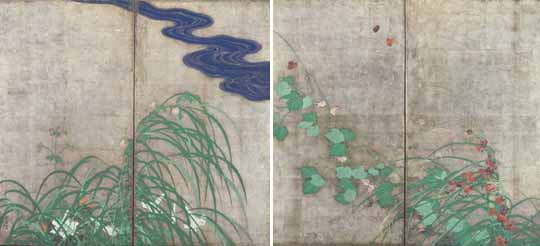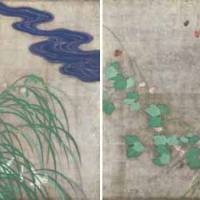Born into the distinguished family of the feudal lord of the Himeji region of Hyogo Prefecture, Sakai Hoitsu (1761-1828) had the luxury of being able to enjoy haiku poetry and calligraphy from a young age. In his 20s, he started to immerse himself in street culture, such as kyōka (satrical poems) and ukiyo-e (woodblock prints), and at age 37, he chose to distance himself from his family when he became a priest. Around that time, Sakai also became particularly interested in Rimpa — a decorative style of painting and calligraphy established by such artists as Tawaraya Sotatsu and Ogata Korin — and he worked on developing a more sophisticated version, so creating a new style called Edo Rimpa.
This exhibition traces Sakai's career through a selection of his works, including his representative piece "Summer and Autumn Grasses," a set of folding screens designated as an Important Cultural Property. Also on show are Edo Rimpa works by other artists; till Oct. 2.
Himeji City Museum of Art, (079) 222-2288, 68-25; Honmachi, Himeji-shi; 6-min. bus ride or 20-min. walk from Himeji Station, JR Kobe Line. 10 a.m.-5 p.m. ¥1,200. Closed Sept. 12, 20. www.city.himeji.lg.jp/art.


















With your current subscription plan you can comment on stories. However, before writing your first comment, please create a display name in the Profile section of your subscriber account page.